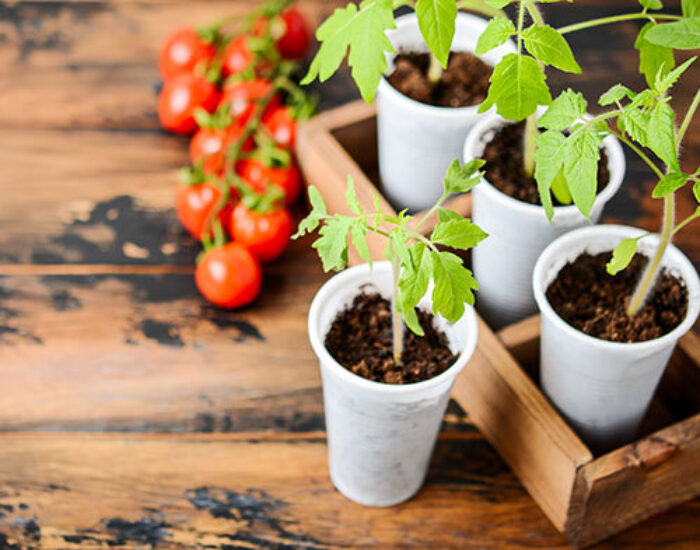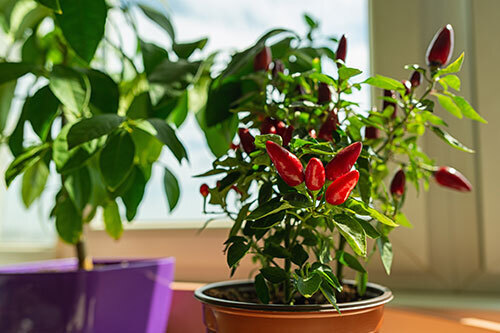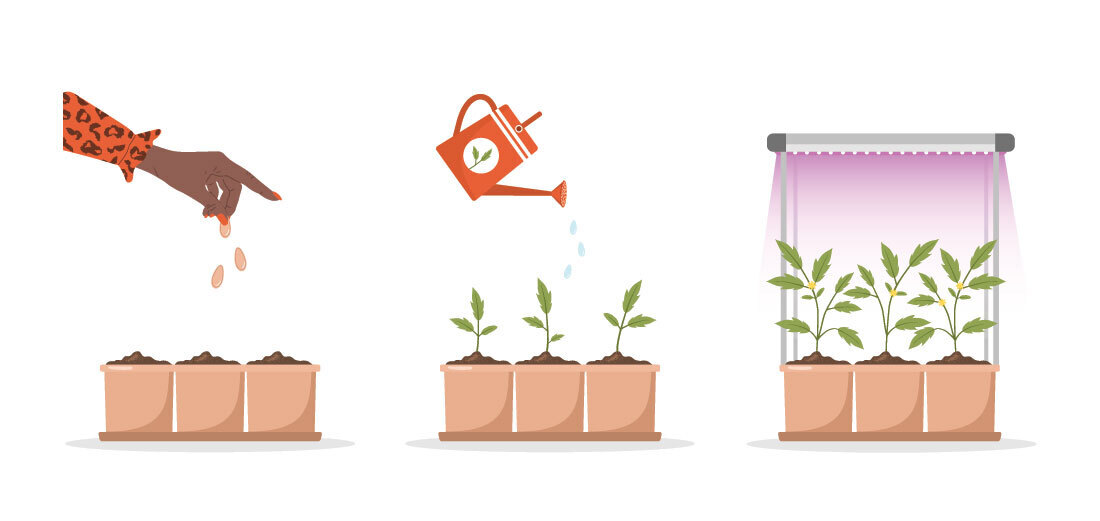February 23rd, 2022
Indoor Vegetable Gardening 101: Winter Sowing

As winter begins to wane our thoughts naturally turn to spring. This is a great time to consider a DIY indoor vegetable gardening project. Sowing during this time of the year is a popular choice for enthusiastic gardeners and provides a head start to spring outdoor planting. Here are a few essential tidbits highlighting steps on how to effectively grow seeds indoors during cold weather months.
Types of seeds to start indoors during winter
Choosing seeds that can easily be cultivated in your home is vital to getting your plan off to a good start. Here’s a sampling of the hardiest seeds that can be grown inside:
Scallions/ Green Onions: Onions are very easy to take care of since they don’t require much space or much sunlight like other seeds may. You can either use young sprouted onions or begin with seeds. These seedlings flourish in 75°F temperatures and need 12 to 14 hours of light.
Carrots: Carrots tend to grow easier in well-moisturized soil and should have at least eight hours of lights each day. Make sure that your carrots get a sufficient amount of watering since they are hardy, cool-tolerant vegetables and simple to germinate with the proper care.
Hot Peppers: Although peppers are warm weather-loving plants, they are able to grow successfully indoors with proper care. They need 14-20 hours of light each day and thrive between 70° and 85°F. In addition, hot peppers are self-pollinating, which is helpful for indoor seedlings.
Tomatoes: Tomatoes are known as the most popular vegetables that can be started indoors. These plants need 14-20 hours of light and prosper at 65°F+ temps. Additionally, tomatoes must have enough air circulation to prevent fungal problems.

What is needed for indoor sowing?
In order for the seedlings process to be easy and successful, it does require specific tools and equipment. Here are some supplies you will need to help get started:
Grow Lights: Using grow lights is an alternative way to replicate direct sunlight inside your home. Moreover, grow lights not only provide light for indoor seeds but also contribute to rapid growth. There are several kinds of grow lights that would prove to be an adequate substitute for natures “light”. You will want to do some research for a grow light that will suit your particular setting and budget.
Containers: You can’t start off your seedling process without a container. There are a large variety that you can choose from such as peat pots, flats and plastic pots. One of the advantages of peat pots is that when it comes time to transplant the seedling outdoors, you can simply drop/plant the whole pot into the soil and not disrupt the young roots. Make sure that your container has good drainage holes for adequate air circulation and allows any excess water to escape.
Heat mats: Heat mats are necessary for in home sowing because they increase the temperature of the soil to promote faster germination and stronger, healthy seedlings.
Water can: A water can is needed for the seeds/seedlings to keep plantings well hydrated and to absorb nutrients from soil fungi. Most indoor seedlings require watering twice a day until established. (The mature plants usually only require watering three times a week.)

The winter seed-growing process:
Step 1: Fill your containers with a seed-stating mix and add in a little water to moisten the soil.
Step 2: Sowing the seeds is a key step during this process. Sprinkle two or three seeds over the soil. Then, cover them with a little soil and mist the surface with water until it is damp.
Step 3: Cover the containers with trays to retain moisture and place them under the grow lights on the heat mat.
Step 4: Keep the soil moist every day by adding the right amount of water, making sure that your soil surface is not too soggy.
Step 5: Once your seedlings have two sets of leaves being formed, it is time to begin fertilizing your young plants.
Step 6: Be patient with each step until it’s time to move your vegetable sprouts to a suitable outdoor garden area that where you will continue to duplicate your diligent efforts and insure continued success for future harvesting!
It’s enjoyable and a nice seasonal hobby to get such a good head start on spring veggie gardening. You will also see an advantage of cost savings that would be gained by sowing plants inside during the winter as opposed to buying sprouts available at a garden center in the spring. Happy indoor planting!




